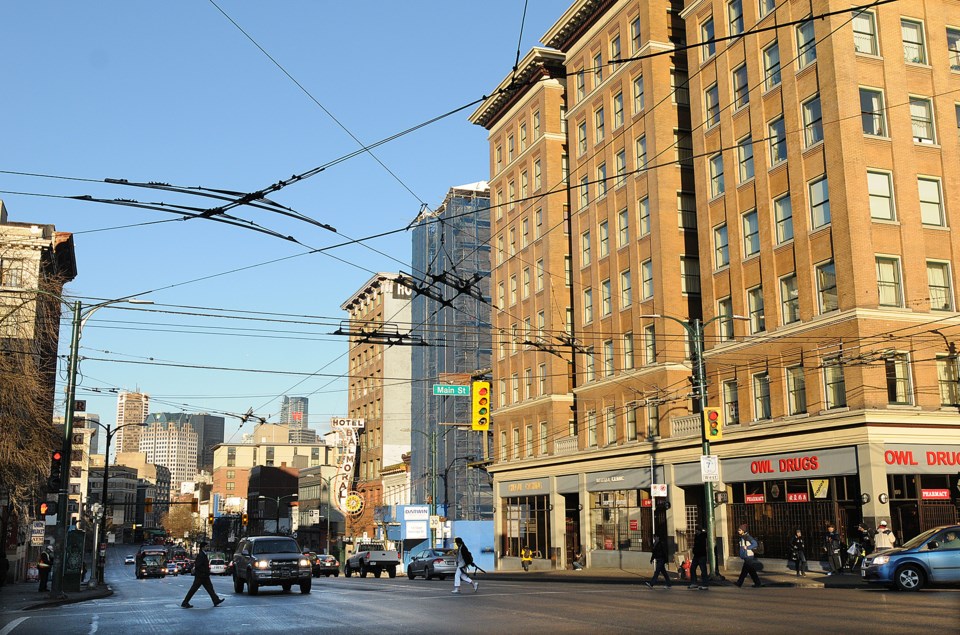The Downtown Eastside is expected to get a massive facelift over the next 30 years that will see thousands of new social housing units, more business spaces and a tree-lined East Hastings Street.
But the $1 billion cost of revitalizing the area that includes Chinatown, Gastown and Strathcona relies heavily on senior levels of government to buck up in a big way.
The city’s proposed new community plan for the Downtown Eastside, which goes before city council March 12, calls for $530 million from the provincial and federal governments.
City manager Penny Ballem told the Courier after a media briefing Thursday that she recognizes the plan will only work with buy-in from Victoria and Ottawa.
“We have to remember it’s over 30 years, we’re not asking for that tomorrow,” Ballem said. “Are we absolutely confident that we’re going to get [the money]? No, but I think we feel much more comfortable that we actually have a very robust and coherent plan. We have very good evidence and justification of why the need is there and it’s very much quantifiable.”
The city has had some success in recent years in working with the provincial government which provided more than $200 million to build 14 social housing buildings on city property.
The federal government has contributed money to projects in the Downtown Eastside but no longer has a national housing strategy.
“But I think it’s fair to say that over the past five years, the prime minister is starting to signal that he understands,” Ballem said. “I would say we’re very hopeful but we certainly at this point have no guarantees. But we think we’re in a much better position with a great plan.”
Of the $1 billion cost of the plan, the biggest expense is $820 million for housing. At least $50 million would come from the city and $245 million from developers, leaving senior levels of government to cover $525 million.
In 2005, the city produced a housing plan for the Downtown Eastside that Vision Vancouver Coun. Andrea Reimer said will deliver “significant numbers of housing units in the next 10 years, even if there is no further investment from the federal government or the province.”
Reimer said “fierce advocacy” is really the only pathway the city has to convince senior levels of government of the need to invest in Vancouver.
“That’s what it took to get the province to the table and I expect it’ll be the same thing that gets the federal government to the table,” she said.
The plan calls for 1,300 new social housing units, another 3,100 units to replace single-room occupancy hotels and new housing for families.
The realities driving the plan are found in the Downtown Eastside’s well-documented poverty statistics: Of the 18,500 residents, up to 67 per cent are considered low income, with a median household income of $13,691.
Unemployment is at 12 per cent with more than 6,300 people on social assistance. The plan also calls for affordable childcare, access to nutritious affordable and culturally appropriate food, increase access to quality health, social and community services, improved arts and culture facilities and upgrades to cycling and pedestrian routes.



